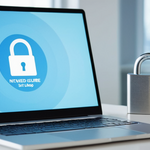
When organizations discover that their sensitive data has been compromised and listed for sale on dark web marketplaces, the initial instinct is often to investigate the exposure themselves. However, attempting to personally search for organizational data on the dark web represents a fundamentally flawed approach to threat intelligence and cybersecurity management. This comprehensive report examines the critical reasons why organizations should not attempt to hunt for their own data on dark web forums, marketplaces, and hidden communities. Through analysis of technical limitations, legal and compliance risks, operational challenges, and cost-benefit considerations, this report demonstrates that do-it-yourself dark web monitoring creates far greater organizational risk than value. The evidence overwhelmingly supports professional dark web monitoring services as the appropriate mechanism for detecting data exposure, with organizations undertaking independent monitoring efforts facing significant technical barriers, potential legal liability, alert fatigue, incomplete coverage, and ultimately wasted resources that could be better deployed toward other security priorities.
The Deceptive Appeal of Do-It-Yourself Dark Web Monitoring
The prospect of maintaining complete control over dark web monitoring efforts appeals to many organizations seeking to optimize their cybersecurity budgets. When faced with the ongoing costs of specialized monitoring services, business leaders often question whether internal teams possess sufficient technical capabilities to scan the dark web independently and alert relevant stakeholders to data exposure. This reasoning contains a superficial logic that appears sound at first consideration but collapses under scrutiny when examined against the actual requirements and challenges of effective dark web monitoring.
The appeal of DIY approaches stems partially from the misconception that dark web monitoring represents a straightforward extension of general internet security practices. Many organizations already employ web search capabilities, utilize built-in security features in enterprise software such as Microsoft tools, and maintain internal expertise in network security monitoring. The assumption follows that these existing capabilities can be extended to monitor the dark web with minimal additional investment. However, this perspective fundamentally misunderstands the unique characteristics of dark web environments and the specialized expertise required to operate effectively within them. Dark web monitoring requires not merely the ability to search the internet, but the capacity to navigate hidden networks, understand criminal ecosystems, interpret threat intelligence, and maintain operational security while conducting investigations that exist in legal gray zones.
Organizations that prioritize budget conservation often fail to recognize that the true cost of dark web monitoring extends far beyond the direct expenses of monitoring services. The indirect costs associated with DIY approaches—including staff time diverted from primary responsibilities, opportunity costs from missed threats, potential legal liability, and ultimate failure to identify critical data exposures—typically dwarf the investment in professional monitoring solutions. Furthermore, when organizations compare only the direct line-item costs of professional services against their current budget allocation, they ignore the massive hidden expenses embedded in maintaining an internal capability that most organizations lack the expertise to operate effectively.
The decision to pursue DIY dark web monitoring often reflects organizational risk tolerance that conflicts with cybersecurity best practices. While some corporate leaders view this decision as a cost-saving measure, security professionals understand that it represents a false economy that trades immediate budget relief for long-term vulnerability. The fundamental problem is not that DIY monitoring is slightly less effective than professional services, but that it operates within an entirely different capability tier, with DIY approaches often failing to detect threats that professional services would identify within hours or days.
Technical and Resource Limitations of Internal Dark Web Investigations
Organizations attempting to conduct independent dark web monitoring encounter immediate and profound technical barriers that prevent them from establishing meaningful visibility into threat actors’ communications and market activities. The infrastructure required to support continuous dark web monitoring significantly exceeds what most organizations have available, and even organizations that do possess the necessary technical foundation often lack the specialized knowledge required to configure and operate these systems effectively. Professional dark web monitoring services operate hundreds of thousands of botnets, monitor hundreds of hidden chat rooms, maintain access to numerous unindexed private sites, track peer-to-peer networks, monitor IRC channels, and maintain feeds from exclusive dark web communication channels—resources that would require enormous investment for any single organization to replicate independently.
The scale of data that must be processed to identify organizational exposure represents another critical technical limitation. Professional monitoring services process millions of records daily across thousands of known dark web sources, extracting patterns and identifying matches against customer organizations. Most internal security teams lack the computational infrastructure, data management systems, and analytical tools required to process this volume of information in near-real time. When monitoring systems attempt to identify organizational data within millions of records, the technical sophistication required to filter relevant signals from background noise becomes substantially greater than most organizations can muster independently.
The specialized software tools required for effective dark web monitoring represent yet another technical barrier to DIY approaches. Dark web monitoring solutions employ sophisticated algorithms to identify fragmented data, correlate information across multiple sources, recognize variations and obfuscations of organizational identifiers, and alert analysts to potential matches. These tools must continuously adapt to changes in dark web infrastructure as malicious actors modify their operations in response to law enforcement pressure and competitive dynamics. The development and maintenance of such tools requires expertise in dark web ecosystems, machine learning, threat intelligence, and security operations that exceeds the capabilities of most internal security teams.
The challenge of maintaining up-to-date source coverage represents a technical burden that grows exponentially with scope. Dark web forums emerge and disappear regularly, marketplaces evolve their technical infrastructure, criminal organizations shift their communication channels, and new platforms emerge constantly. Professional monitoring services invest heavily in maintaining relationships with human intelligence sources, employing researchers and analysts who understand criminal ecosystems, and continuously mapping the dark web landscape to maintain visibility into current and emerging threat channels. Organizations attempting DIY monitoring would need to maintain this mapping independently, an effort that requires dedicated resources and expertise that few organizations can justify allocating to this specific function.
Data integration and enrichment capabilities further highlight the limitations of DIY approaches. When professional monitoring services identify potential organizational data exposure, they automatically correlate these findings with other threat intelligence sources, historical breach information, threat actor profiles, and vulnerability data to provide contextual analysis that helps organizations assess and respond to threats. This analytical enrichment requires access to extensive threat intelligence databases and the expertise to interpret data in appropriate context. Most organizations lack both the data sources and analytical expertise required to perform this integration independently.
The Hidden Complexity of Dark Web Navigation and Data Discovery
The dark web presents a fundamentally different environment than the surface internet that most security professionals understand. While conventional internet searches leverage centralized search engines and well-indexed content, the dark web operates as a collection of disparate communities, private forums, encrypted marketplaces, and hidden communication channels that deliberately resist indexing and discovery. Organizations attempting to hunt for their own data must confront the reality that they do not know where to search, how to access restricted communities, or which sources most likely to contain their specific organizational information.
The structural organization of dark web communities creates substantial barriers to effective independent search. Cybercriminals maintain sophisticated social hierarchies, reputation systems, and access controls that determine which community members can view sensitive information or participate in specific discussions. A threat actor might list organizational data in exclusive forums accessible only to members who have demonstrated financial capacity or criminal credibility, meaning that an organization attempting to discover this exposure would require infiltration into these restricted spaces—an approach fraught with legal and operational risks. Professional monitoring services often maintain access to these restricted communities through long-term relationships, undercover operations, and human intelligence sources that individual organizations could never establish independently.
The ephemeral nature of dark web platforms creates another layer of complexity that undermines DIY monitoring efforts. Marketplaces, forums, and communication channels regularly relocate, rebrand, or shut down in response to law enforcement action or competitive pressure. Organizations conducting independent monitoring might discover a marketplace containing their data only to find that the marketplace has relocated or disappeared by the time they can take action. Professional monitoring services maintain continuous visibility into these changes precisely because they employ specialized staff dedicated to tracking the dark web landscape full-time, something that would require substantial organizational commitment if attempted internally.
The linguistic and cultural expertise required to identify organizational data within dark web communities further complicates DIY efforts. Threat actors employ specialized terminology, coded language, slang, and obfuscation techniques to discuss stolen data and describe what they are selling. An organization unfamiliar with these linguistic conventions might scan through relevant forum discussions without recognizing that their data was being discussed or sold. Professional analysts, by contrast, develop deep familiarity with how threat actors describe different types of data, which market terminology corresponds to which categories of information, and how to recognize organizational data even when threat actors deliberately obscure its origin or characteristics.
The challenge of understanding threat actor motivations and market dynamics represents another barrier to effective DIY investigations. Professional dark web analysts understand the supply chains of stolen data, recognize which threat actors specialize in data theft versus data resale, identify which criminal organizations target specific industries or organization types, and understand the seasonal and event-driven patterns that influence dark web activity. Organizations attempting independent monitoring lack this contextual understanding, making it difficult to interpret what they discover and assess its significance to organizational security posture.
The time investment required to develop even basic competency in dark web navigation places unrealistic demands on most organizations. Professional analysts typically spend months or years developing expertise in dark web operations, building relationships with information sources, learning to navigate complex marketplaces and forum systems, and developing the pattern recognition skills required to identify relevant threats. Organizations attempting to undertake this learning curve while simultaneously maintaining their normal security operations face impossible resource constraints. The opportunity cost of diverting experienced security personnel away from their primary responsibilities to learn dark web navigation represents another significant but often unacknowledged cost of DIY approaches.
Legal and Regulatory Compliance Risks of Independent Dark Web Operations
Organizations undertaking independent dark web monitoring activities expose themselves to substantial legal liability that extends far beyond the direct technical challenges of the effort. The legal framework governing dark web access and investigation is complex, varies significantly by jurisdiction, and creates potential criminal liability for well-intentioned organizational efforts to discover and protect against data exposure. Unlike professional dark web monitoring services that operate under carefully structured legal frameworks and maintain relationships with law enforcement, organizations attempting independent monitoring often lack the legal guidance necessary to ensure that their investigative activities remain within lawful bounds.
The Computer Fraud and Abuse Act (CFAA) represents the most significant legal barrier to independent dark web monitoring in the United States. Under this statute, unauthorized access to restricted-access computer systems constitutes a federal crime, and accessing dark web forums, marketplaces, or communication channels without authorization potentially violates CFAA provisions. While professional dark web monitoring services often operate with some level of legal protection or law enforcement coordination, organizations attempting independent monitoring lack the institutional structures necessary to ensure that their activities remain within legal parameters. A security analyst accessing a restricted dark web forum without authorization might, in the worst case scenario, expose the organization to federal criminal liability.
The use of false personas or stolen credentials to access dark web communities represents another significant legal risk associated with DIY monitoring. While creating a false online identity specifically for dark web monitoring purposes is generally permissible, assuming the identity of an actual person without their consent or using stolen credentials to access restricted forums violates federal law. Organizations attempting to infiltrate dark web communities to discover their own data might inadvertently cross this legal boundary, particularly if the monitoring effort lacks clear legal guidance and structured protocols. Professional monitoring services maintain documented rules of engagement and legal compliance frameworks that help ensure their activities remain within lawful bounds, while most organizations attempting independent monitoring lack these protective structures.
Compliance with data protection regulations adds another layer of legal complexity to dark web monitoring activities. When organizations discover personal information on dark web marketplaces, they must comply with notification requirements, data breach reporting obligations, and privacy regulations specific to their jurisdiction and industry. Depending on the regulations applicable to the organization and the nature of the information discovered, data breach notification timelines might be extremely tight, with requirements to notify affected individuals within days or even hours of discovery. Organizations attempting independent dark web monitoring might discover exposure but fail to properly document the discovery process, maintain appropriate evidence of the exposure, or follow required notification procedures. These failures could result in regulatory penalties that exceed the cost of the data breach itself.
The admissibility of evidence discovered through independent dark web monitoring also raises concerns for organizations that might need to involve law enforcement. If an organization’s monitoring activities are not conducted following appropriate protocols, any evidence discovered might be inadmissible in legal proceedings or law enforcement investigations. Professional monitoring services maintain documented protocols specifically designed to ensure that evidence discovered during monitoring efforts can be used in legal proceedings if necessary. Organizations conducting independent monitoring rarely maintain these evidentiary standards, potentially rendering evidence unusable in the event of subsequent legal action.
The lack of structured incident response protocols associated with DIY monitoring creates additional compliance risk. When data exposure is discovered, organizations must follow specific response procedures to minimize harm, notify affected parties, preserve evidence, and document their investigation. Organizations that discover exposure through independent monitoring often lack the protocols necessary to ensure that their response meets regulatory and legal requirements. Professional monitoring services typically coordinate directly with client incident response procedures, ensuring that discovery and response activities proceed according to established organizational protocols and regulatory requirements.
The potential for organizations conducting independent monitoring to inadvertently interfere with law enforcement investigations represents a unique legal risk. Law enforcement agencies often monitor dark web marketplaces and criminal forums as part of ongoing investigations, and unauthorized monitoring by private organizations might inadvertently disrupt these efforts or interfere with evidence collection. While this risk may seem remote, organizations that conduct extensive independent dark web monitoring increase the probability of accidental interference with law enforcement activities.

The Alert Fatigue and False Positive Catastrophe
Organizations attempting to monitor the dark web independently immediately confront overwhelming volumes of data that generate unmanageable quantities of alerts and reports. The dark web processes millions of pieces of information daily, with constant chatter across forums, market listings, peer-to-peer exchanges, and encrypted communications. Systems attempting to identify organizational data within this information torrent face an inherent problem: they must maintain sensitivity sufficient to catch genuine threats while simultaneously filtering out vast quantities of irrelevant information. Most DIY monitoring approaches fail catastrophically at this filtering task, generating overwhelming numbers of false positives that overwhelm security teams and render the entire monitoring program ineffective.
False positives represent one of the most insidious problems created by DIY dark web monitoring efforts. When automated systems scan the dark web for organizational identifiers, they often identify partial matches, similar but non-identical information, or contextually irrelevant results that they flag as potential threats. A system searching for a company name might flag references to companies with similar names, generic uses of common terms, or marketing discussions that mention the company but contain no actual data exposure. The volume of these false positives in DIY monitoring systems often exceeds 50% of all alerts generated, meaning that security analysts spend more than half their time investigating threats that do not actually represent organizational risk.
The damage caused by false positives extends far beyond the wasted time of investigating non-threats. Alert fatigue—the condition that develops when security teams receive too many alerts and begin to disregard them as background noise—represents a catastrophic failure mode for security monitoring systems. When analysts receive dozens or hundreds of daily alerts, most of which prove to be false positives, they inevitably begin to devalue alert-based information. Studies have documented that security teams receiving high volumes of alerts exhibit lower rates of response to legitimate threats, exhibit slower investigation times, and are more likely to dismiss genuine threats as false positives. This degradation of team vigilance potentially creates greater security risk than existed before the monitoring system was deployed.
Organizations implementing DIY monitoring systems frequently lack the sophisticated filtering and enrichment capabilities required to reduce false positive rates to manageable levels. Professional dark web monitoring services employ machine learning algorithms, threat intelligence enrichment, and human analysts specifically dedicated to validating alerts and filtering out false positives. These services understand that organizations cannot effectively respond to thousands of daily alerts, so they implement multi-layered validation processes to ensure that only genuine, actionable threats are escalated to client security teams. DIY monitoring approaches typically lack these sophisticated filtering systems, either generating overwhelming volumes of unfiltered alerts or employing crude filtering mechanisms that miss genuine threats while still generating excessive false positives.
The problem of handling incomplete, fragmented, or corrupted data compounds the false positive challenge. When cybercriminals sell stolen data on dark web marketplaces, they often fragment the information, publish incomplete records, or mix organizational data with unrelated information. Automated systems attempting to identify organizational data within this fragmented landscape often generate alerts for partial matches or incomplete records that do not represent actionable threats. Professional monitoring services employ human analysts to interpret these fragmented discoveries in context, determining which partial matches represent genuine exposure and which represent false alarms. Organizations attempting independent monitoring typically lack this human interpretation capability, resulting in either overwhelming false positive rates or dangerous false negative rates where genuine partial exposures are filtered out as irrelevant.
The temporal dimension of false positives creates additional problems for DIY approaches. A DIY monitoring system might generate false positive alerts for non-threatening data, then continue generating these same false positives repeatedly over extended periods. An organization might flag the same email address or similar identifier multiple times, potentially responding to the same non-threat repeatedly. Professional monitoring services track alert history to avoid regenerating false positives that have previously been investigated and determined to be non-threatening. DIY approaches typically lack this state management, resulting in repetitive false positives that consume analytical resources without providing any corresponding security benefit.
The psychological impact of excessive false positives on security team morale and effectiveness cannot be overlooked. When teams spend most of their time investigating non-threats, they experience frustration, burnout, and reduced engagement with security monitoring activities. Staff members begin to view dark web monitoring as an unrewarding task that generates excessive busywork, reducing their enthusiasm for security operations generally. This demoralization spreads throughout the security organization, potentially degrading the overall security posture as teams lose confidence in monitoring systems and reduce their investment in responding to alerts. Professional monitoring services, by contrast, deliver high-quality, highly relevant alerts that security teams view as valuable intelligence, maintaining team motivation and engagement.
Coverage Gaps and the Illusion of Visibility
Organizations attempting independent dark web monitoring often develop a dangerous false sense that they possess adequate visibility into their potential data exposure. In reality, DIY approaches create profound coverage gaps that allow significant organizational data to remain exposed on dark web platforms without detection. The illusion of coverage—where organizations believe they are monitoring relevant platforms when in fact they are monitoring only a tiny fraction of the dark web landscape—represents one of the most hazardous aspects of DIY approaches. This false sense of security might prevent organizations from implementing effective monitoring despite dangerous exposures remaining hidden.
The scope of the dark web vastly exceeds the monitoring capability of most organizations attempting independent surveillance. Professional services monitor more than 640,000 botnets, hundreds of hidden chat rooms, myriad unindexed private sites, exclusive peer-to-peer networks, IRC channels, private communication platforms, social media networks, forums, data markets, and trading forums. This comprehensive coverage requires continuous investment in source development, technical infrastructure, and analytical expertise. Most organizations attempting DIY monitoring focus on a handful of publicly known dark web marketplaces or forums that they can access and search using conventional browsers. This approach misses the vast majority of actual dark web activity, including many of the most significant platforms where threat actors conduct business.
Private forums and exclusive communities represent a critical coverage gap in DIY approaches. The most sensitive stolen data is often sold in invitation-only forums or private communities where access is restricted to trusted members of the criminal ecosystem. These private communities deliberately hide from public view and implement access controls that prevent unauthorized entry. Organizations attempting independent monitoring have no mechanism to gain access to these restricted communities and thus remain entirely blind to valuable data sales occurring within them. Professional monitoring services often maintain access to these private communities through undercover operations, long-term relationship development, and intelligence partnerships that individual organizations cannot replicate.
Encrypted communication channels represent another significant coverage gap. Threat actors increasingly utilize end-to-end encrypted messaging platforms like Telegram, Signal, and encrypted email to discuss stolen data and coordinate transactions. Automated monitoring tools cannot access the contents of these encrypted channels, creating a blind spot in any monitoring system that relies purely on technical scanning. Professional monitoring services often employ human intelligence sources with access to these encrypted communities, allowing them to remain informed about relevant discussions occurring on platforms that appear completely opaque to automated systems.
The velocity of platform changes further exacerbates coverage gaps in DIY approaches. Dark web platforms regularly relocate to new infrastructure, rebrand, or shift to new communication protocols in response to law enforcement pressure. An organization might identify a marketplace containing their data only to discover that the marketplace has disappeared and migrated to a new location. Professional monitoring services maintain near-real-time awareness of these platform migrations and can typically track threat actors and their operations across platform transitions. Organizations attempting independent monitoring usually lack the resources to maintain awareness of these rapid infrastructure changes, creating periods of vulnerability when platforms transition and monitoring coverage is lost.
The linguistic and cultural barriers to discovering organizational data represent another form of coverage gap. Threat actors employ coded language, specialized terminology, and obfuscation techniques that make direct keyword searches ineffective. Organizations searching for their corporate domain name or employee email addresses might miss discussions where threat actors use abbreviated references, partial information, or coded identifiers to discuss the same data. Professional analysts familiar with how threat actors describe specific types of information can recognize organizational data even when it is not explicitly labeled, providing coverage that keyword-based DIY approaches cannot achieve.
Accidental exposures and third-party breaches represent a final critical coverage gap. Organizations might discover that their data has been exposed through breaches at vendor organizations, supply chain partners, or through other indirect exposure vectors. Professional dark web monitoring services specifically monitor for these secondary exposures by tracking discussions of supply chain breaches and identifying customers of hacked organizations. DIY approaches typically only search for direct organizational identifiers and miss these more complex exposure patterns.
Time Investment and Opportunity Costs of Internal Monitoring Efforts
The labor costs associated with DIY dark web monitoring represent a substantial but often underestimated component of the total cost of ownership for independent monitoring efforts. Organizations attempting to implement monitoring systems must dedicate experienced security personnel to learn dark web navigation, understand threat intelligence interpretation, and maintain monitoring systems. Even for organizations with existing security expertise, acquiring dark web-specific knowledge requires significant training investment. More fundamentally, experienced security staff spend time on dark web monitoring that could be deployed toward higher-value security activities. The opportunity cost of this diverted expertise often exceeds the direct costs of professional monitoring services.
The expertise development phase consumes enormous amounts of organizational time before any effective monitoring capability can be established. Professional analysts typically spend months or years developing competency in dark web operations, relationship building, and threat intelligence interpretation. Organizations attempting to accelerate this learning curve by dedicating internal resources to training create a bottleneck in security operations while staff members develop necessary expertise. Even after the training investment is complete, dark web monitoring requires ongoing professional development as the dark web landscape constantly evolves, threat actors modify their tactics, and new platforms emerge.
Continuous monitoring operations create perpetual staffing requirements that most organizations find unsustainable. Professional dark web monitoring services operate 24/7/365 with dedicated teams constantly monitoring dark web activity. Organizations attempting independent monitoring face two alternatives: either deploy internal staff to monitor continuously, or accept gaps in coverage when monitoring activities are not occurring. Continuous coverage requires either hiring additional staff specifically dedicated to dark web monitoring or removing existing security staff from their primary responsibilities. The personnel costs associated with either approach typically exceed the costs of professional services within a short time frame.
The problem of knowledge retention further complicates the opportunity costs. When organizations invest in training staff to conduct dark web monitoring, that knowledge often concentrates in individual employees. If these employees change roles, leave the organization, or become unavailable, the organization loses its accumulated dark web expertise and must restart the expertise development process. Professional monitoring services maintain institutional knowledge that persists across staff transitions and ensures continuity of monitoring regardless of personnel changes.
The undercounting of investigative time represents another significant opportunity cost. When dark web monitoring systems generate alerts, analysts must investigate these alerts to determine whether they represent genuine organizational exposure or false positives. Even well-filtered alerts often require 30 minutes to several hours of analyst time to properly investigate. Organizations with large monitoring footprints might generate dozens of alerts daily, consuming hundreds of hours of analyst time monthly. Professional monitoring services typically pre-filter and validate alerts before escalating them to clients, dramatically reducing the investigation burden on client organizations. Internal monitoring approaches typically lack this pre-filtering, consuming analyst time with investigations that professional services would have already completed and filtered.
The lag time between data discovery and response represents another hidden cost of DIY approaches. Organizations that discover data exposure through independent monitoring might lack the trained incident response teams or established protocols to respond quickly. Professional monitoring services typically operate in coordination with established incident response processes, ensuring that validated threats are quickly escalated to appropriate response teams. The delays associated with DIY approaches often extend the period during which discovered data remains at risk of exploitation.
Professional Monitoring Services: Specialized Expertise and Dedicated Resources
Professional dark web monitoring services represent a fundamentally different category of security capability compared to DIY approaches, not merely because they possess more resources, but because they embody specialized expertise developed through years of engagement with dark web ecosystems. These services employ teams of former law enforcement officials, threat intelligence analysts, and deep web researchers who understand the structure, operation, and dynamics of dark web communities in ways that no organization can replicate through general security hiring. Professional services maintain relationships with law enforcement, coordinate with cybersecurity researcher communities, and invest heavily in maintaining awareness of dark web landscape changes that would be impossible for individual organizations to track independently.
The continuous monitoring capability provided by professional services represents a qualitative difference from any DIY approach. Professional dark web monitoring services maintain active monitoring of thousands of dark web sources 24 hours daily, automatically processing millions of daily data points and identifying potential organizational exposure in near real-time. When organizational data appears on dark web marketplaces, professional services can typically alert affected organizations within hours, providing a window to respond before threat actors begin exploiting the exposure. Organizations attempting independent monitoring face either the impossibility of continuous coverage without unlimited staffing, or accept monitoring gaps during non-business hours and weekends when threats most often emerge.
The technical infrastructure required for professional monitoring far exceeds what most organizations maintain. Professional services operate sophisticated platforms capable of processing vast data volumes, implementing complex filtering algorithms, maintaining threat intelligence databases, and automating alert generation and enrichment. These platforms represent years of development investment and continuous updates to maintain capability against evolving dark web tactics. Organizations would require massive capital investment to develop equivalent infrastructure independently, and even well-funded organizations rarely maintain the specialized technical expertise required to operate such sophisticated systems effectively.
The human intelligence gathering capability of professional services provides access to information that technical systems cannot obtain. Professional analysts maintain relationships within dark web communities, cultivate informant networks, and conduct undercover investigations to gather intelligence about threat actor activities and upcoming data dumps. This human intelligence capability provides critical visibility into private forums, encrypted communications, and restricted communities where most sensitive organizational data is traded. Organizations attempting independent monitoring cannot replicate this human intelligence capability without engaging in undercover law enforcement-style operations that expose them to significant legal risk.
The quality of threat intelligence analysis provided by professional services reflects deep expertise in threat actor profiling, motivations, and tactics. When professional monitoring services discover organizational data, they provide contextualized analysis about who possesses the data, how they likely obtained it, what they intend to do with it, and whether the exposure represents part of a targeted attack campaign. This analysis enables organizations to not merely respond to immediate exposure but to understand the broader threat landscape and adjust their defense strategies accordingly. Organizations conducting independent monitoring typically lack the threat analysis expertise to provide this level of contextual intelligence.
Professional services often provide specific guidance to organizations about how to respond to discovered exposures in ways that maximize protective effectiveness. Rather than simply alerting organizations to the presence of their data, professional monitoring services coordinate with incident response efforts, help prioritize response activities, and recommend specific protective measures based on the nature of the exposure and the threat actors involved. This guidance capability significantly improves response effectiveness compared to organizations that independently discover exposure but lack guidance about optimal response strategies.
The legal and compliance expertise of professional monitoring services ensures that discovery and response activities meet regulatory requirements and legal standards. Professional services understand the legal framework governing dark web monitoring in different jurisdictions, maintain protocols that ensure activities remain within lawful bounds, and ensure that evidence discovered through monitoring can be used in legal proceedings if necessary. Organizations attempting independent monitoring frequently lack this legal guidance, creating liability risks that far exceed the cost of professional services.

The Business Impact of Delayed or Missed Threat Detection
The consequences of failing to detect organizational data exposure on dark web marketplaces extend far beyond the direct costs of responding to the exposure. Delayed or missed detection allows threat actors substantially more time to exploit stolen data before organizations can implement protective measures. When organizations fail to detect exposure until months after the initial compromise—the current average detection timeline for many organizations—threat actors have time to exploit credentials across organizational systems, move laterally through networks, establish persistence mechanisms, or sell the data to multiple attack groups. By the time the organization discovers the exposure, the damage often far exceeds what would have occurred if detection had been immediate.
The business impact of failed detection includes financial fraud, identity theft conducted against organizational customers, business email compromise attacks leveraging compromised credentials, ransomware infections originating from stolen access credentials, and compromised intellectual property. Each of these outcomes creates downstream consequences far exceeding the organization’s investment in dark web monitoring. Organizations with detected dark web exposure show significantly higher rates of subsequent cyber incidents, with some studies demonstrating 2-5 times higher incident rates for organizations with known dark web exposure compared to those without. This dramatically increased incident risk creates cascading consequences in terms of incident response costs, legal liability, regulatory penalties, and reputational damage.
The first-mover advantage possessed by organizations that detect exposure earliest provides enormous competitive advantage in managing the consequences. Organizations that learn about exposure through professional dark web monitoring within hours or days can implement protective measures such as credential resets, access restrictions, and enhanced monitoring before threat actors have opportunity to exploit the exposure extensively. Organizations that discover exposure months later through alternative means face a situation where extensive exploitation has already occurred, dramatically increasing remediation complexity and consequences.
The reputational damage associated with data breaches varies dramatically based on whether the organization was aware of exposure and failed to respond appropriately versus responding quickly upon detection. Regulatory agencies, customers, and the media evaluate breach responses not only on the extent of exposure but on the organizational response speed and effectiveness. Organizations that detect exposure through professional dark web monitoring and respond quickly demonstrate responsible incident management and often face lesser regulatory consequences and customer backlash. Organizations that discover exposure through external means after extended periods demonstrate poor security practices and face dramatically more severe reputational consequences.
The regulatory consequences of inadequate dark web monitoring represent a substantial financial risk. Many industries and jurisdictions impose specific requirements for breach detection and notification timelines. Organizations that fail to detect breaches within required timeframes face regulatory penalties that can exceed millions of dollars. The faster detection rates enabled by professional monitoring significantly reduce regulatory risk by ensuring that breach notifications occur within required windows. Organizations conducting independent monitoring often miss detection windows entirely, accumulating regulatory penalties that would have been avoided through professional monitoring.
The insurance implications of failed dark web monitoring create additional financial consequences. Cyber insurance carriers increasingly recognize that organizations maintaining professional dark web monitoring demonstrate stronger security practices and security awareness than those attempting independent monitoring or no monitoring at all. These carriers often provide premium discounts to organizations maintaining professional monitoring, effectively reducing the cost of professional services through insurance benefits. Conversely, organizations without professional monitoring might face higher insurance premiums or find that certain types of coverage become unavailable entirely. Over multi-year periods, insurance premium differentials can exceed the total cost of professional monitoring services.
Comparative Risk Analysis: Professional Monitoring Versus DIY Approaches
A rigorous comparison of professional dark web monitoring services versus DIY approaches reveals that professional services provide substantially greater security value at considerably lower total cost of ownership when all direct and indirect costs are properly accounted for. While professional monitoring services do require direct financial investment, this investment produces detection capabilities, analytical depth, legal compliance, and risk reduction that DIY approaches cannot achieve at any realistic cost. The following table summarizes key comparative characteristics of the two approaches across critical dimensions:
| Evaluation Dimension | Professional Monitoring Services | DIY Monitoring Approaches |
|—|—|—|
| Coverage Scope | 640,000+ botnets, hundreds of forums, private communities, encrypted channels | Limited to publicly accessible marketplaces and forums |
| Detection Speed | Near real-time (hours) | Delayed (days to months) or never |
| False Positive Rate | Low (5-20%) due to sophisticated filtering | High (50%+ typical) |
| Threat Analysis Depth | Contextualized analysis with threat actor profiling | Raw alerts without contextual analysis |
| Continuous Coverage | 24/7/365 with dedicated staff | Depends on internal staffing availability |
| Legal Compliance | Documented protocols meeting legal requirements | High risk of legal violations |
| Staff Expertise Required | Minimal client organization expertise needed | Requires specialized deep web expertise development |
| Infrastructure Investment | Included in service costs | Substantial capital investment required |
| Response Coordination | Integrated with incident response processes | Depends on internal incident response capability |
| Cost per Detected Exposure | Lower total cost of ownership over multi-year period | Higher when all direct and indirect costs included |
The financial comparison between professional services and DIY approaches becomes dramatically clearer when all costs are properly quantified. A typical mid-sized organization attempting independent dark web monitoring might allocate one full-time equivalent security staff member to this function at an annual cost of approximately $100,000-$150,000 in salary and benefits. Add to this the costs of infrastructure, software, training, and expertise development, and the annual cost quickly rises to $250,000-$400,000 or more. This investment typically produces incomplete coverage and high false positive rates that prevent effective threat detection. By contrast, professional dark web monitoring services typically cost $10,000-$50,000 annually depending on monitoring scope, and produce superior coverage, faster detection, and higher-quality threat intelligence. The total cost differential becomes even more pronounced when the costs of missed detections, delayed incident response, and regulatory penalties are factored into the analysis.
The risk differential between professional and DIY approaches extends beyond simple detection rates to encompass the qualitative nature of detected threats. Professional services identify not only direct organizational exposures but also secondary exposures through supply chain partners, marketplace listings and offers, threat actor discussions about organizations, and emerging threats specific to the organization’s industry or sector. DIY approaches typically detect only the most obvious direct exposures, missing sophisticated threat patterns that professional services would identify. This difference in coverage translates to dramatically higher risk for organizations attempting independent monitoring.
Recommendations and Implementation Guidance
Organizations seeking to establish effective dark web monitoring capabilities should prioritize professional monitoring services over DIY approaches. While professional monitoring services require ongoing financial investment, this investment represents perhaps the highest return-on-investment security expense available to most organizations. The detection speed, analytical depth, compliance capability, and peace of mind provided by professional services far outweigh the direct costs of the service. Organizations with existing strong security postures should implement professional dark web monitoring as a foundational element of comprehensive threat intelligence programs.
The selection of professional monitoring services should emphasize providers that maintain clear visibility into their data sources, employ experienced threat analysts, maintain relationships with law enforcement and research communities, provide real-time or near-real-time alert capabilities, and demonstrate integration with client incident response processes. Organizations should demand transparency about coverage scope and should be skeptical of services claiming to monitor “all” of the dark web, as such claims often indicate repackaged public data and limited differentiation from free tools. The most effective monitoring services employ human intelligence gathering, maintain proprietary relationships with dark web communities, and continuously invest in maintaining awareness of infrastructure changes.
Organizations that have already invested in independent monitoring capabilities should assess their detection rates, false positive frequencies, and analytical depth against benchmarks provided by professional services. Many organizations discover that their internal monitoring systems are detecting only a fraction of the exposures that would be identified by professional services operating on the same organization. These organizations often find that transitioning to professional services while maintaining internal response capabilities produces superior overall security outcomes.
For organizations with significant budget constraints, a phased approach might involve implementing professional monitoring for the most sensitive categories of organizational information while attempting targeted internal monitoring for less sensitive data. However, such tiered approaches typically prove less effective than comprehensive professional monitoring because threat actors do not segment their activities based on organizational priorities—sensitive and less sensitive information are often discovered together on the same marketplaces. Over time, organizations implementing phased approaches usually find that comprehensive professional monitoring becomes cost-justified through improved detection and reduced incident response costs.
Why the Data Hunt Stops Here
The proposition that organizations can effectively hunt for their own data on dark web marketplaces represents one of the most dangerous misconceptions in contemporary cybersecurity practice. While the appeal of reducing monitoring costs through DIY approaches is understandable, the actual consequences of independent monitoring—including incomplete coverage, detection delays, excessive false positives, legal compliance risks, resource drain, and ultimately failed threat detection—create far greater organizational risk and cost than professional monitoring services. The evidence overwhelmingly demonstrates that organizations maintaining professional dark web monitoring detect data exposures earlier, respond more effectively, face lower regulatory risk, achieve better legal compliance, and ultimately experience better security outcomes than organizations attempting independent monitoring.
The technical requirements, specialized expertise, legal framework, and operational demands of effective dark web monitoring exceed the capabilities of virtually all organizations attempting independent efforts. Professional dark web monitoring services have emerged because the challenge of maintaining continuous visibility into dark web marketplaces requires dedicated teams, sophisticated infrastructure, human intelligence networks, and specialized expertise that individual organizations cannot justify developing independently. Attempting to replicate these capabilities internally consumes resources, creates legal risk, generates excessive false positives, and ultimately fails to achieve the detection speeds and analytical depth necessary for effective threat response.
Organizations should view professional dark web monitoring not as a discretionary security expense but as a foundational element of comprehensive cybersecurity programs. The investment in professional monitoring services provides immediate visibility into potential data exposures, rapid alerting when organizational data surfaces in criminal marketplaces, contextualized threat analysis to support response efforts, and compliance with legal and regulatory requirements governing breach detection. The alternative—attempting independent monitoring—consistently produces inferior outcomes at higher total cost of ownership while exposing organizations to legal, compliance, and operational risks.
As dark web marketplaces continue to proliferate and cybercriminal activities accelerate, the importance of professional monitoring services will only increase. Organizations that continue to view dark web monitoring as something they can perform independently are setting themselves up for failed detection, delayed response, escalated breach consequences, and ultimately greater organizational harm. The evidence strongly supports a straightforward recommendation: organizations should not hunt for their own data on the dark web. Instead, they should partner with professional monitoring services that possess the capability, expertise, and infrastructure necessary to detect organizational exposures quickly and respond effectively to protect organizational security, reputation, and financial well-being.
Protect Your Digital Life with Activate Security
Get 14 powerful security tools in one comprehensive suite. VPN, antivirus, password manager, dark web monitoring, and more.
Get Protected Now





